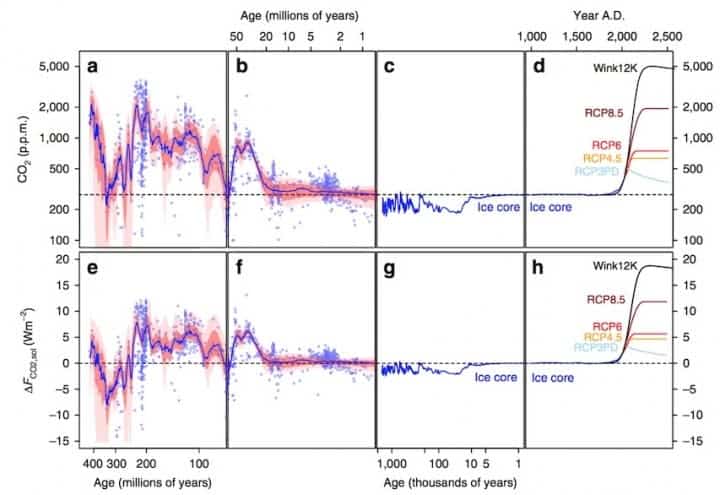Remember when the world was hoping our atmosphere will never reach 400 carbon dioxide parts per million (ppm)? Well, we can wave 400 ppm goodbye, cause it’s come and passed — we’ve even breached 410, for the first time in human history. Yes, this is bad and yes, it will have even worse consequences.

The Mauna Loa Observatory recorded its first-ever carbon dioxide reading in excess of 410 parts per million — it was 410.28, to be more precise. It’s a new generation of atmosphere, which will trap more and more heat. It’s solid evidence that the 400 ppm has been definitely breached, as we are now looking at other, even more worrying figures. It’s also an indication that humanity’s impact on the planet can now be discussed at a geological level.
“Its pretty depressing that it’s only a couple of years since the 400 ppm milestone was toppled,” Gavin Foster, a paleoclimate researcher at the University of Southampton told Climate Central last month. “These milestones are just numbers, but they give us an opportunity to pause and take stock and act as useful yard sticks for comparisons to the geological record.”
It’s not just the Mauna Loa that’s raising the red flag. Earlier this year, the U.K. Met Office scientists issued their first-ever carbon dioxide forecast. The forecast correctly predicted that 2016 would also be the first year in the record where the concentration of atmospheric carbon dioxide wouldn’t dip below 400 parts per million (ppm) and predicts a rise of 2.5 ppm — smaller than in 2016, but still not good.

There’s a direct connection between the global warming we’re seeing and the greenhouse gasses in the atmosphere, especially carbon dioxide. The last time similar levels were reached on Earth was 3 million years ago, during the mid-Pliocene, a period often used as an analog for today’s climate. Just take a moment to think that the last time there was this much carbon dioxide in the atmosphere, humans weren’t even around as a species.
During that time, temperatures 2–3 °C higher than today and sea levels were 25 meters higher. If current levels maintain, that’s a good indication of what might lie in store for the future. Needless to say, if similar conditions would be recreated today, they would threaten the lives of hundreds of millions if not billions of people. So how do we keep today’s climate from becoming like the mid-Pliocene climate?
Well, the answer is (technically) simple — just reduce our emissions, by a lot. It’s actually doing that that’s more difficult. The world has taken some steps towards that goal, with the Paris Agreement providing a much-needed international framework, but the way things are going at the moment, it’s simply not enough. Think about it this way: if we reduce our emissions, we’re still emitting and making things worse, just not as worse as we were before. “Less bad” is not the same as better, not in this case. But there is a tipping point If we want to see temperatures plateau. There is some debate around what tipping point may be, but it’s somewhere around 50%. Basically, we have to reduce our emissions by half if we want to keep carbon levels stable, and even more if we want to see them drop.
“The rate of increase will go down when emissions decrease,” Pieter Tans, an atmospheric scientist at the National Oceanic and Atmospheric Administration, said. “But carbon dioxide will still be going up, albeit more slowly. Only when emissions are cut in half will atmospheric carbon dioxide level off initially.”
As cliche as it may sound, the stakes have never been higher. If we don’t take massive action fast, we’re well on course to reach a climate that’s unprecedented in 50 million years, since the Eocene.
“The early Eocene was much warmer than today: global mean surface temperature was at least 10°C (18°F) warmer than today,” Dana Royer, a paleoclimate researcher at Wesleyan University who studied Eocene climate, said. “There was little-to-no permanent ice. Palms and crocodiles inhabited the Canadian Arctic.”
If that doesn’t scare you, I don’t know what will.


